Characteristics and dimensions
Let's start with a description of the material:
Terrace board - This is one of the options for outdoor flooring. It is used not only for decorating terraces, but also on verandas, balconies, walkways, walkways, as well as in facing of building facades, decoration of fences.
Important! Decking is often confused with deck board, but they are separate materials. The easiest way to distinguish it is in appearance: the former has a relief surface, the latter is smooth.
Characteristics boards depend primarily on its composition: there is a terrace covering made of natural wood or wood-polymer composite.
The advantages of each option and which of the two is better suited for open and closed spaces will be discussed in the following sections.
Concerning dimensions:
- WPC decking is produced with a width of 9-25 cm, a length of 3-6 meters. The thickness varies depending on the purpose: thin - 19-21 mm, medium 22-30, thick - 35-48 (for places with high traffic).
- With solid wood, everything is more complicated. Width within 12-14 cm, length up to 4 m, board thickness ~ 28 mm.
The composition also affects life time Decking board: WPC decking from different manufacturers has different parameters, but in general, the life of the flooring reaches 50 years. Natural wood, unlike composite, regularly requires special treatment: the more carefully it is done, the longer the coating will live.
Also, the service life depends on the type of wood: most often the boards are made from larch and pine. The first (corduroy) without protective compounds will last ~ 50 years, the second - no more than 5.
In the photo, the decoration of the terrace with decking
Pros and cons
What are the pros and cons of a decking mostly depends on what it consists of. But first, let's take a look at the general indicators:
Benefits:
- Moisture resistance... WPC board is not afraid of water, in principle, the tree becomes hydrophobic after the surface of the board is treated with protection.
- Resistant to temperature extremes... This is more true for composite decking or expensive wood species. Cheap wood quickly loses its appearance.
- Wear resistance... Neither thin hairpins, nor heavy furniture, nor other aggressive measures can damage the finish.
- Safety... Since it is impossible to slip on the logs, thanks to the grooves on the corrugated surface, they are often laid on piers, piers, and pools.
- Durability... The life expectancy with active exploitation reaches 50 years and even more.
- beauty... Still, the floor, although it is outdoor, should be not only practical, but also fit into the design. And what could be more harmonious in the exterior than wood or its imitation?
disadvantages it is still more logical to disassemble the terrace board separately for wood and composite.
- Any, even rare exotic wood species, are susceptible to moisture, mold, fungus, pests, insects. Therefore, wood flooring requires protection.Boards are processed not only before laying, but also regularly repeat the coating on the already finished floor. Without varnish or wax from snow, rain, ultraviolet radiation, the logs will quickly lose their original appearance and given geometry: the flooring will have to be changed.
- WPC decking boards are devoid of the disadvantages listed above, but they have their own nuances: for example, an unnatural composition. Polyvinyl chloride overcomes many disadvantages, but flooring is no longer sustainable.
Important! When calculating the final cost of the finished floor, take into account not only the price of the material, but also additional costs. For example, to make the polymer deck look aesthetically pleasing, it is complemented with L- or F-shaped profiles along the edges. And natural wood will have to be coated with special mixtures in several layers, and this also costs money. In addition, the work takes a lot of time and effort. Do not forget about fasteners - from self-tapping screws to special fasteners.
What kind of material is best?
It is difficult to unambiguously choose between solid wood decking or WPC products: both options have their own advantages and disadvantages. Therefore, the decision is made on a case-by-case basis.
Natural wood
By purchasing solid wood materials, you add environmental friendliness to your space, but be prepared for complex preparation, regular maintenance. Lags require periodic coating with oil, paint, varnish - this is the only way to achieve high performance.
The second issue is cost. Cheap larch or pine will not hit the budget, but they are not characterized by increased resistance to various kinds of influences and will not last as long as, for example, expensive oak.
The rule is simple: the harder the raw materials used, the more expensive and durable they are.
The wood is sold both clean and pre-treated:
- Heat treated... Thanks to the steam sauna at a temperature of 200C, the parameters of the wood change for the better: the deck becomes more durable, not subject to drying out under direct rays.
- Impregnated... In this case, the wood begins to absorb the protective compounds already in production, and they penetrate into the fibers under high pressure, which is much more reliable than conventional impregnation. In addition, during a complex process, under the influence of a vacuum, wood loses excess moisture and becomes less susceptible to rotting and fungus.
In the photo there is a natural board for the floor on a closed balcony
KDP
Composite boards are devoid of many of the negative qualities of wood materials, thanks to the addition of various polymers to wood flour. PVC (it is also used in the production panels) provides resistance to high humidity, low temperature, sunlight.
There is no need to prepare the deck board for installation - the logs are already painted and ready for use. Further care of the polymer floor is also minimal: it can withstand washing by any means, does not need to be processed.
However, an unnatural composition cannot be called inexpensive: the cost of one board is, on average, twice as expensive as coniferous lamellas.
The ratio of polymers to wood flour determines more accurate decking characteristics:
- 50/50. The mixture is considered the most correct - the finished logs look beautiful at the same time and have all of the above positive qualities.
- 40/60. When PVC is larger than wood, the flooring looks very unnatural.
- 70/30. On the one hand, a small amount of polymer = a more sustainable formulation. On the other hand, less protection against moisture - the floor can swell.
The photo shows a fine-textured composite
Selection recommendations
The use of decking is the main point on which the final choice should be based.
For example, for closed gazebos, balconies, loggias, it is better to choose larch or other coniferous analogue. Cheap breeds are not as durable, so they do not behave best outdoors.But in the room they have no equal: firstly, the areas of the balconies are small and they will have to be processed a little. Secondly, the beautiful structure and characteristic scent of wood will create an unforgettable atmosphere in the house.
Open balconies, verandas, terraces or porches are paved with high-quality expensive boards (differ in strength, density) or decking made of wood-polymer composite. The second can give off an unpleasant odor in closed rooms, but it is safe in open areas.
What else to look for when choosing a decking board:
- Class... Refers to natural wood, shows the quality of raw materials. For example, AB is inexpensive, but there are knots on the surface. Extra is the best type of board: absolutely smooth, homogeneous wood.
- Color... The natural floor can be covered with any composition, and the shade of the composite is specified by the manufacturer and is selected “on the shore”.
- Appearance... Of course, there should be no cracks, chips, or potholes on the front side.
- Standard... Wood-polymer composite materials can be marked Home (used for spaces with a low load), Professional (has increased strength, suitable for commercial locations).
In the photo there is a dark floor on the porch of the house
Applications
Due to their almost unique properties, terraced logs were so fond of craftsmen that they were not used anywhere: from interior work in apartments, to finishing the facades of houses and installing fences.
Balcony floor
Floor finishes for balconies open or cold type, raises many questions about materials: not all types are suitable for balcony conditions. Decking is a suitable option for flooring, because walking barefoot on it is a pleasure.
And the installation process is so simple that you can handle the installation with your own hands - which means that the high price is justified by the savings in paying for the masters.
Advice! Lags are suitable not only for finishing the floor, but also for walls and ceilings.
Terrace floor
As the name suggests, decking is literally created for terraces! The coating, resistant to sun, temperature and humidity, fits perfectly into the landscape design and creates a cozy atmosphere near the house.
On such a floor you can place a recreation area, a dining area, put a jacuzzi or a pool, install a playground.
In the photo there is an open terrace with a dining table
Porch decoration
The area at the front door is subject to serious mechanical stress, therefore, the requirements for the floor material are higher here than even on the terrace. The floor covering should be decorative, durable, such as decking.
In addition, porch often equipped with steps that must be safe for children and adults: slipping on a wooden floor is excluded even after rain in autumn or snow in winter.
Advice! If it rains frequently in your area, cover your porch with a deck. The texture of the surface and the gaps between the boards will prevent water from accumulating at the entrance to the house or getting inside.
Paths in the country
The most important component of landscape design are garden paths... They directly affect the appearance of the site, because they diverge along the entire perimeter.
Decking is an excellent option for finishing paths. The tree fits well into the environment, and washing it, unlike the same stone, is much easier: it means that your paths will always look aesthetically pleasing.
In the photo there are paths in landscape design
Facades
Any kind of decking - an analogue option clapboard or siding. In such "clothes" private houses and cottages look modern and original.
Important! For a more dramatic look, use logs only on parts of the house, combining them with simpler, smoother materials such as plaster.
Decking fence
Slats are also suitable for construction of fences: Safe decking hedges have a pleasant appearance and raise the status of the object.
From individual boards, you can make a classic picket fence, a horizontal fence or the recently popular "wave-like" laying around the house (it is better to entrust the production to a construction company).
Decking gate
In addition to the fence, you can make a gate and a wicket: for this, individual strips are attached with self-tapping screws to any type of metal profile.
In the photo, a combined fence made of boards and bricks
Garden beds
Inveterate summer residents cannot be ignored either. The high degree of protection from water logs made of WPC allows them to be used as fences for beds. A garden with such flower beds looks very stylish.
Depending on the task, you can make a bed of any shape, size: from a low small flower bed for flowers, to a huge "pots" for a tree or shrub.
In the photo there are decking beds
Design examples
The main question when choosing boards is color. PVC decking is available in a wide palette of shades: from natural, like oak, maple, pine.
Until unusual:
- gray quartz;
- green malachite;
- red-orange terracotta;
- gray-black indigo.
Different manufacturers have different color lines, in some cases, if the variety is not enough, you can ask to make the desired shade to order, choosing according to the RAL scale.
In the photo, finishing the stairs with WPC decking
It's even easier with natural wood: the base can be painted in any color! Tint wax, stain, tinted varnish or the most common paint. You can even draw a drawing, because the choice is not limited by anything.
It is not necessary to use only one shade - the colors work well with each other. For example, make a dark edging on a light base or highlight the seating area with a different color from the main one.
In the photo there is a light floor made of natural material
A final tip: before buying a board, ask the manufacturer for a certificate for this expensive product. This way you can be sure of the quality of the material and check the required characteristics, for example, the minimum temperature or maximum humidity.

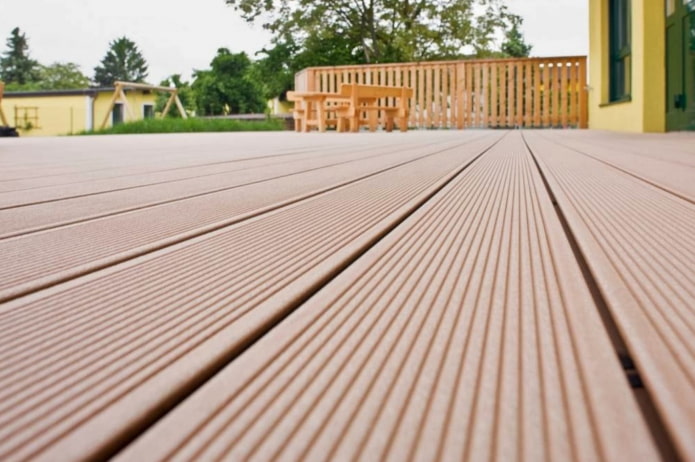
 10 practical tips for arranging a small kitchen in the country
10 practical tips for arranging a small kitchen in the country
 12 simple ideas for a small garden that will make it visually spacious
12 simple ideas for a small garden that will make it visually spacious
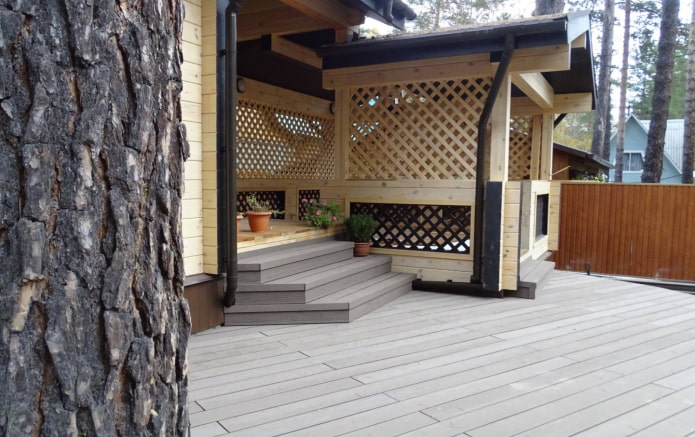
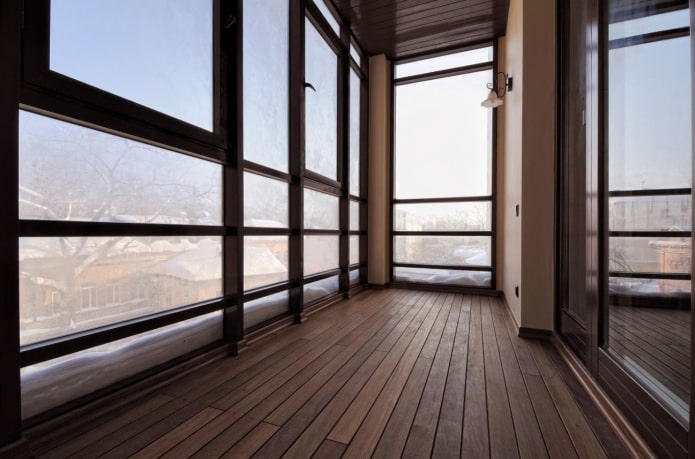
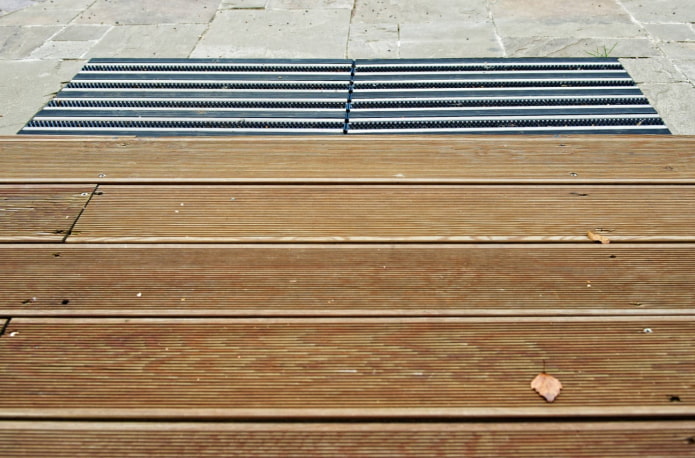
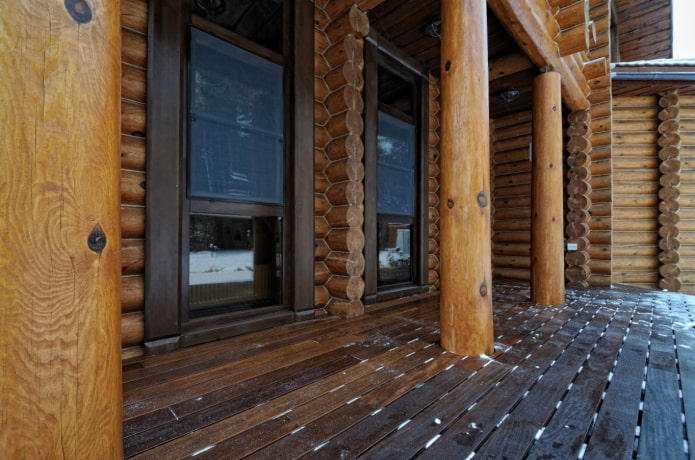
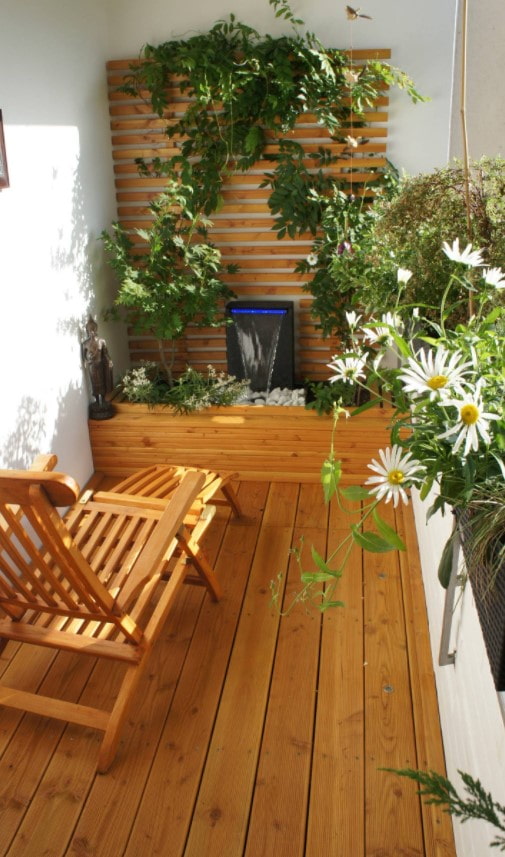
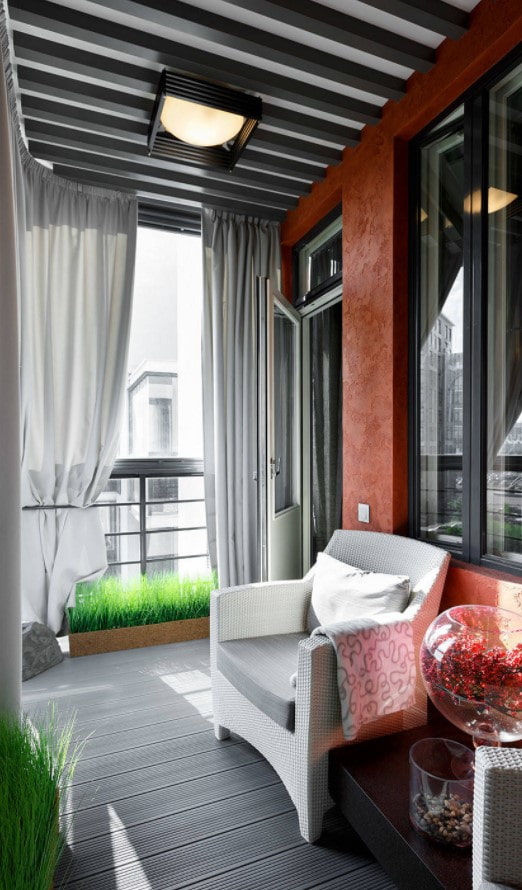
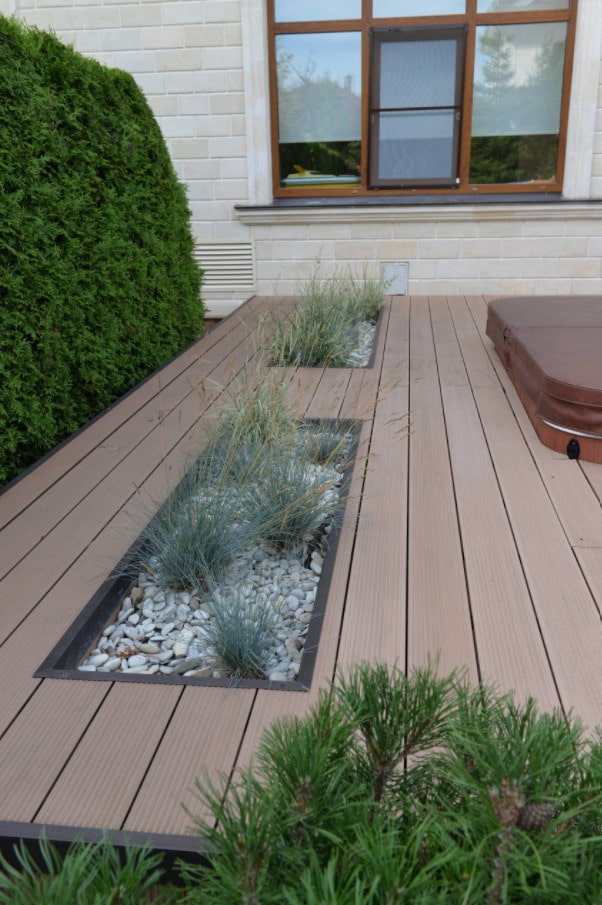
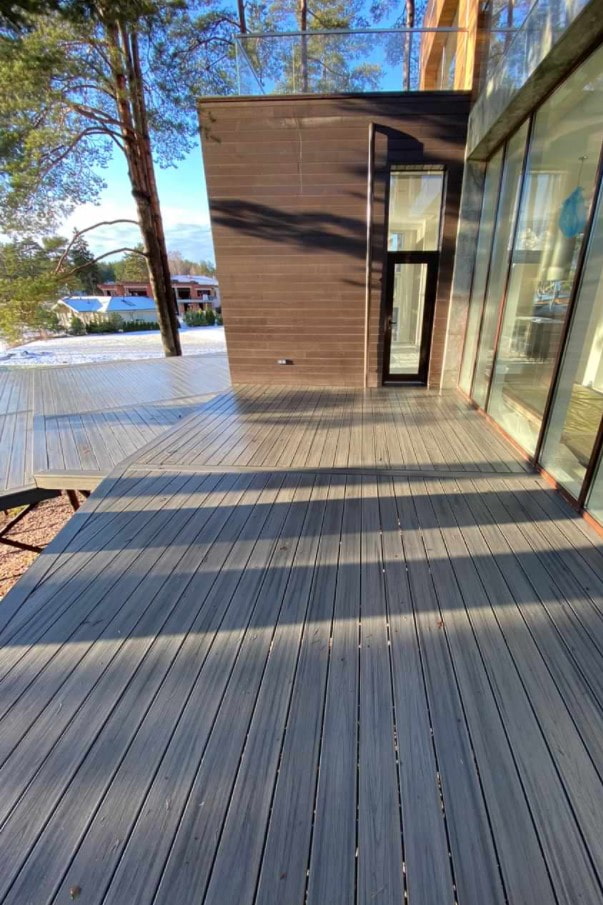
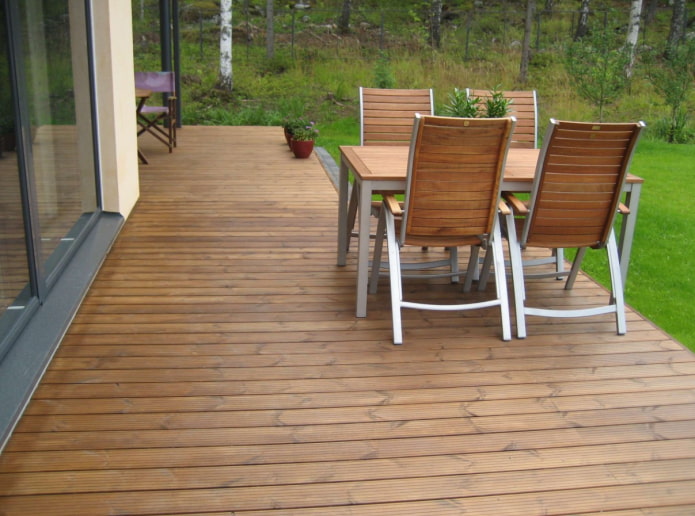
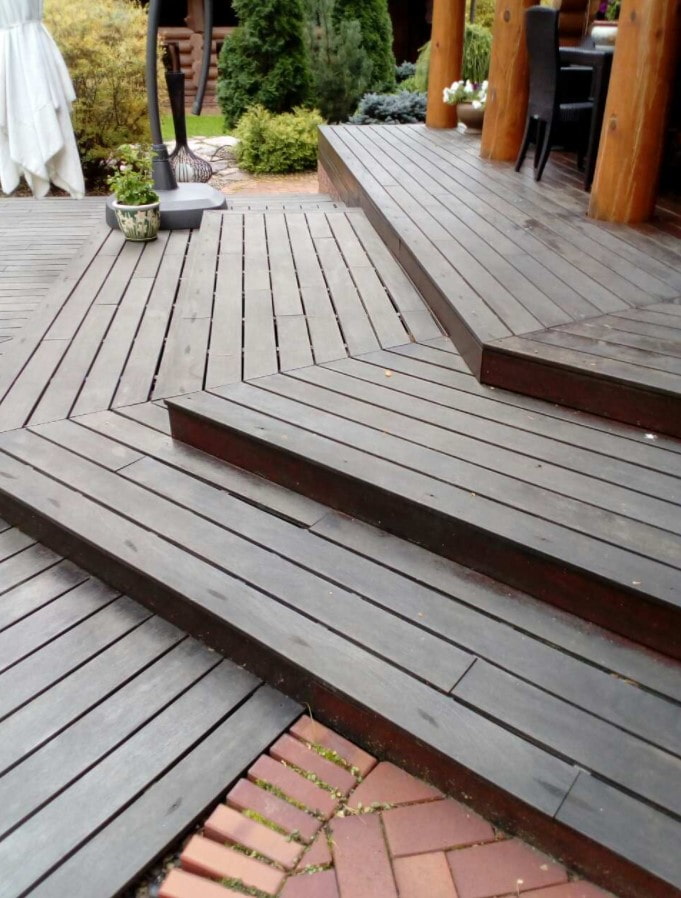
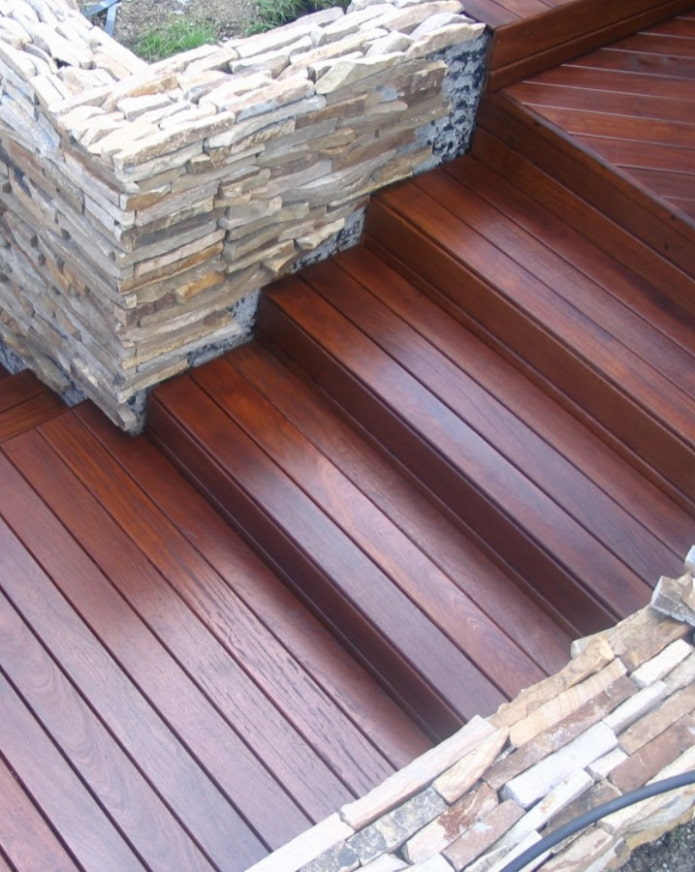
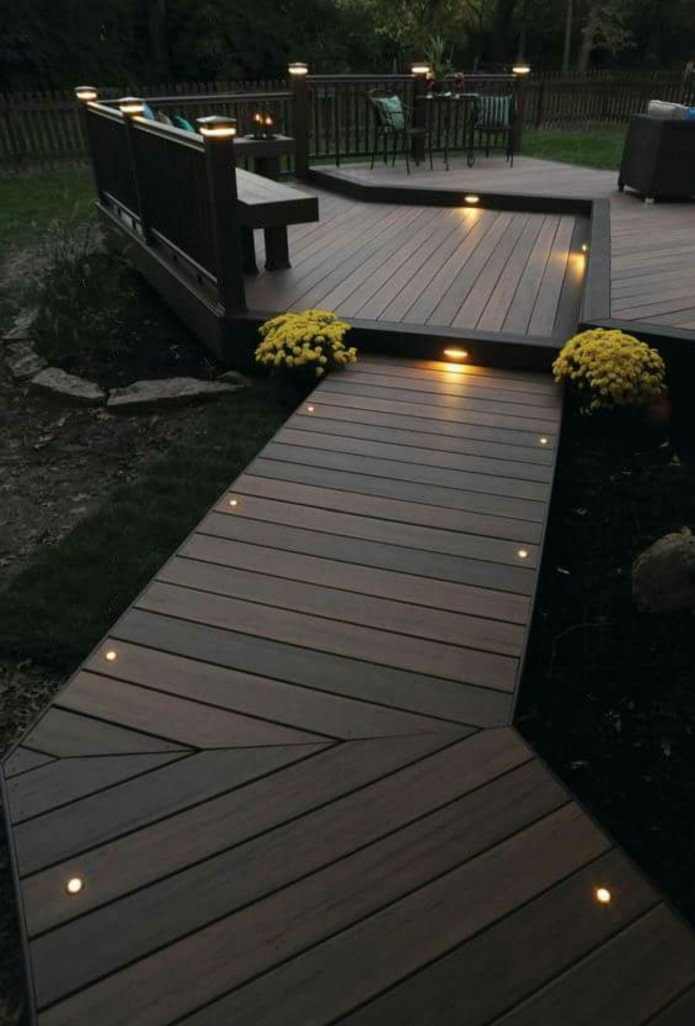

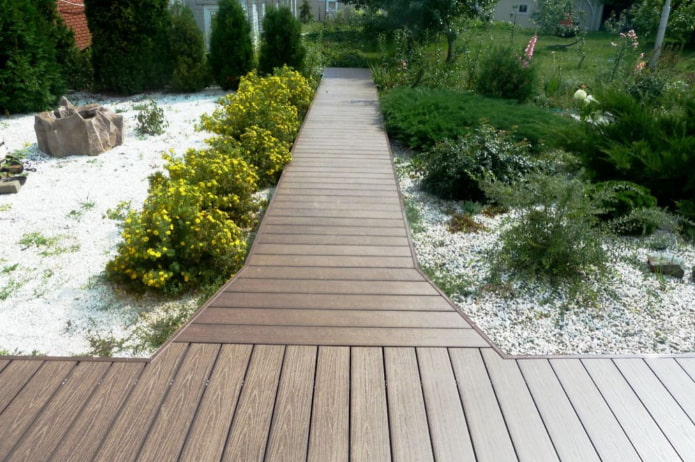
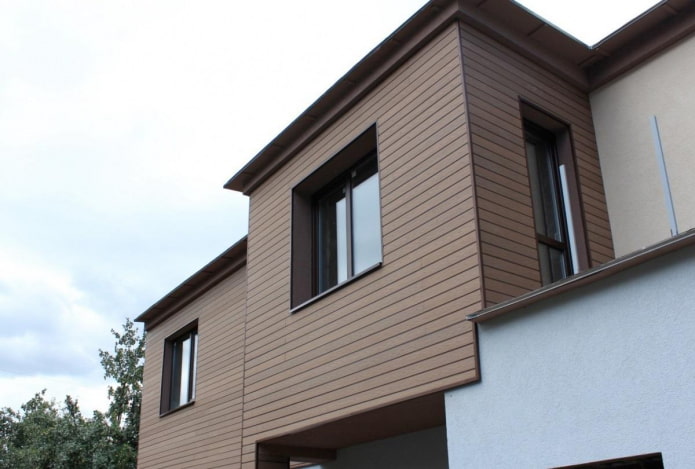
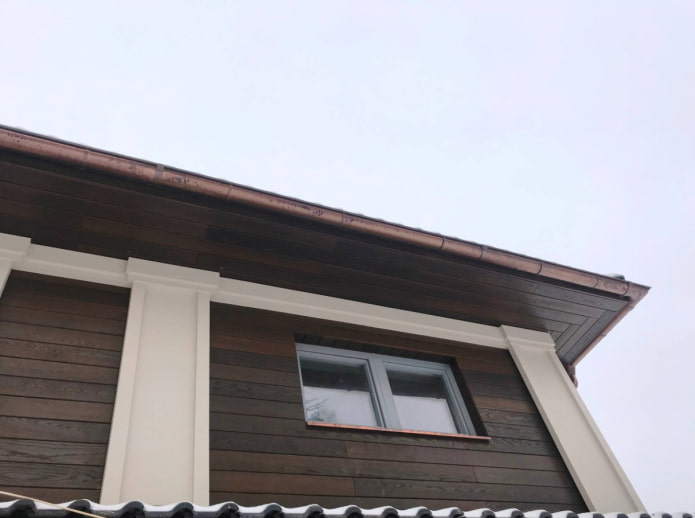
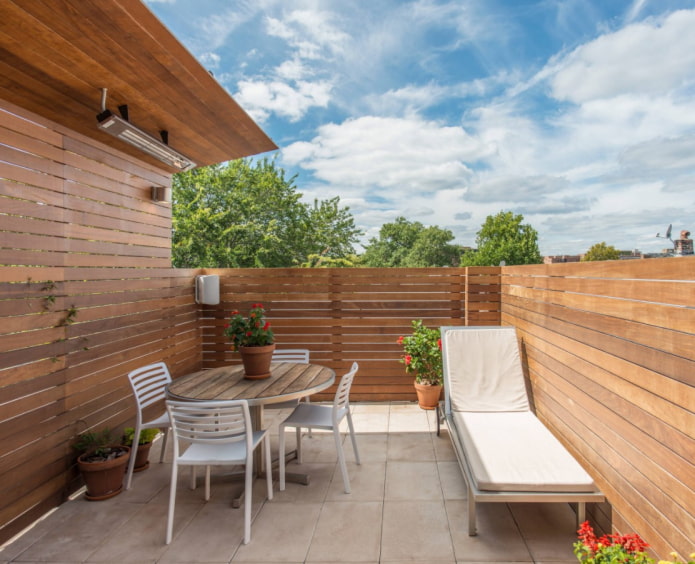
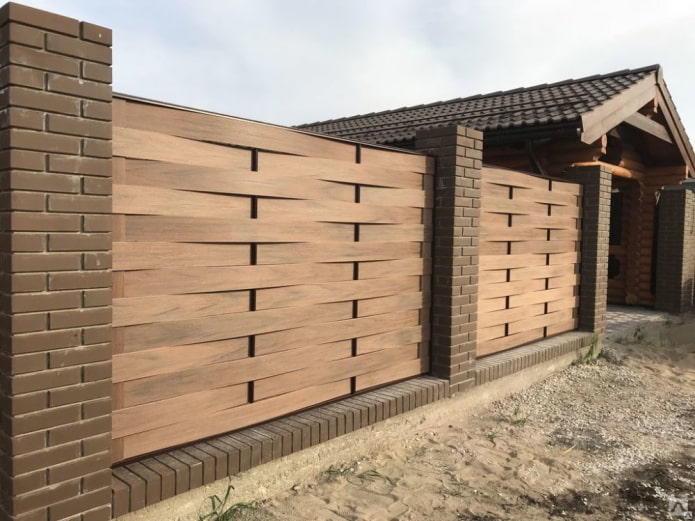
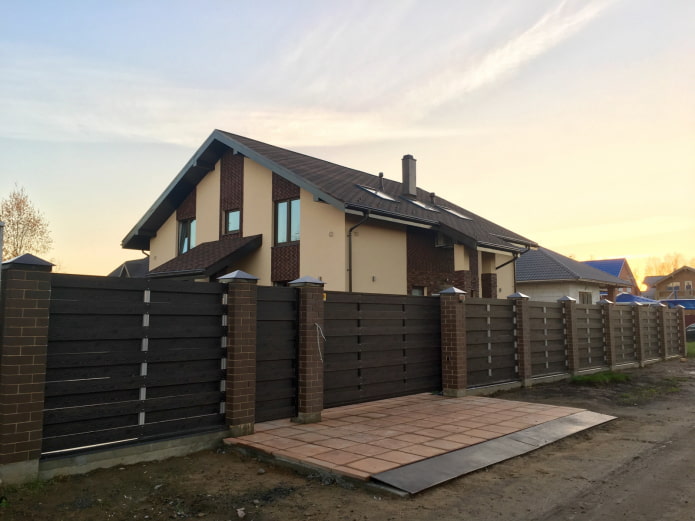
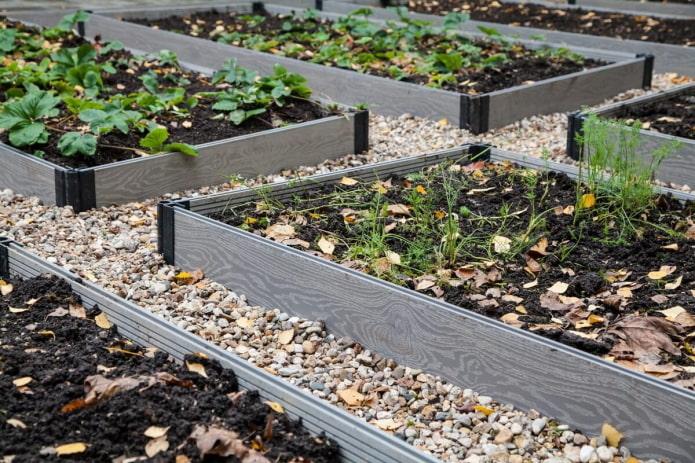
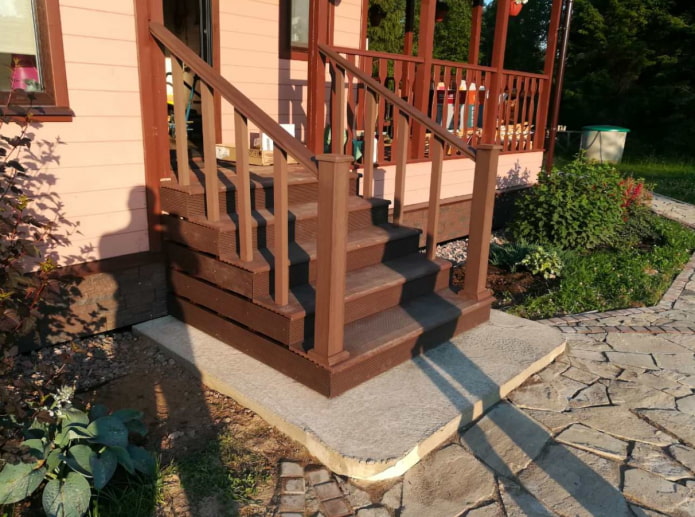
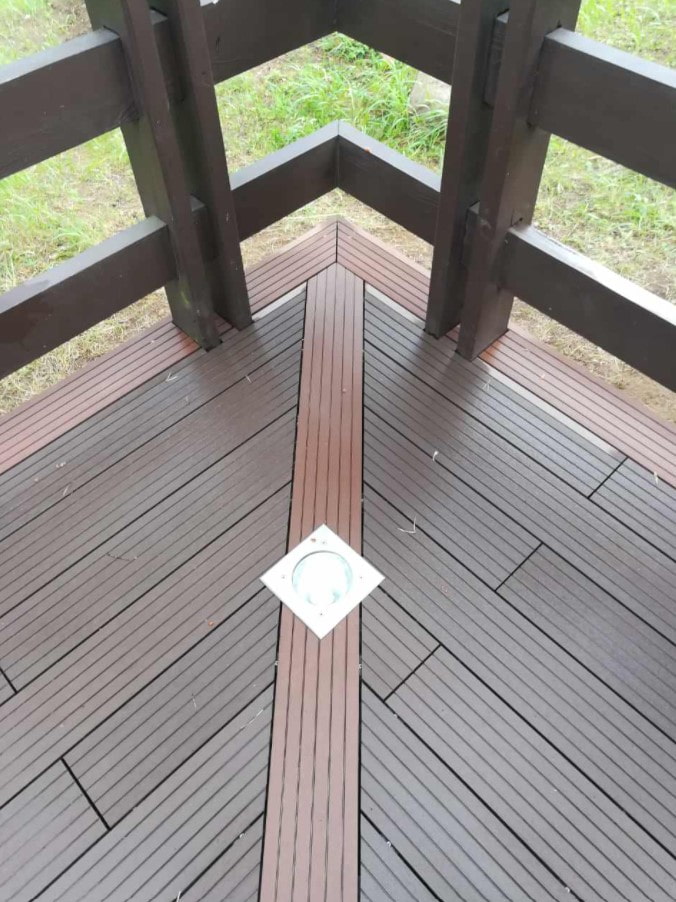
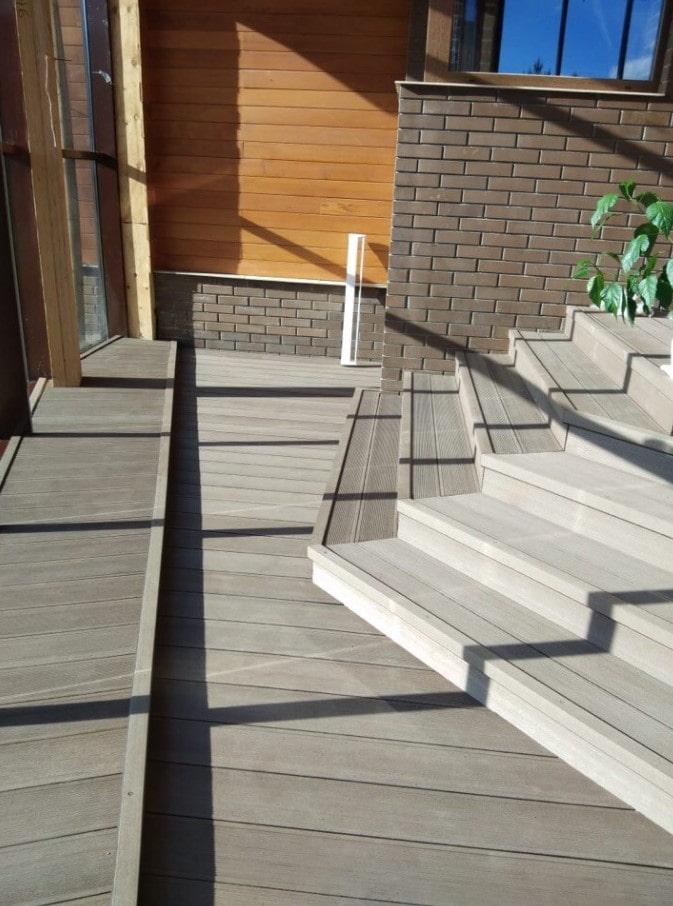
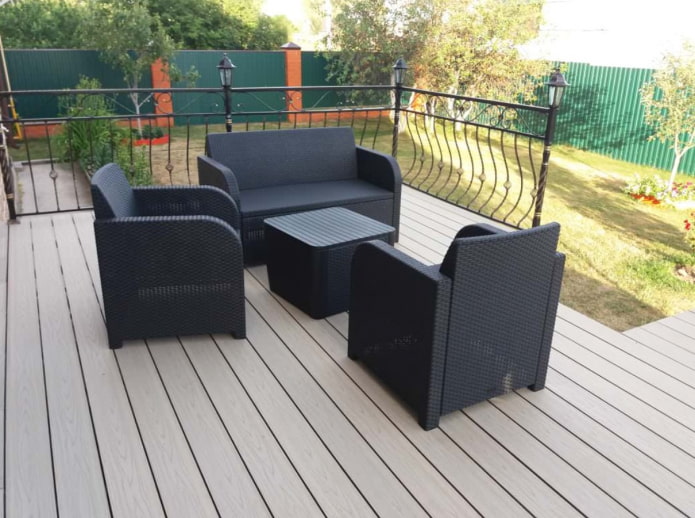
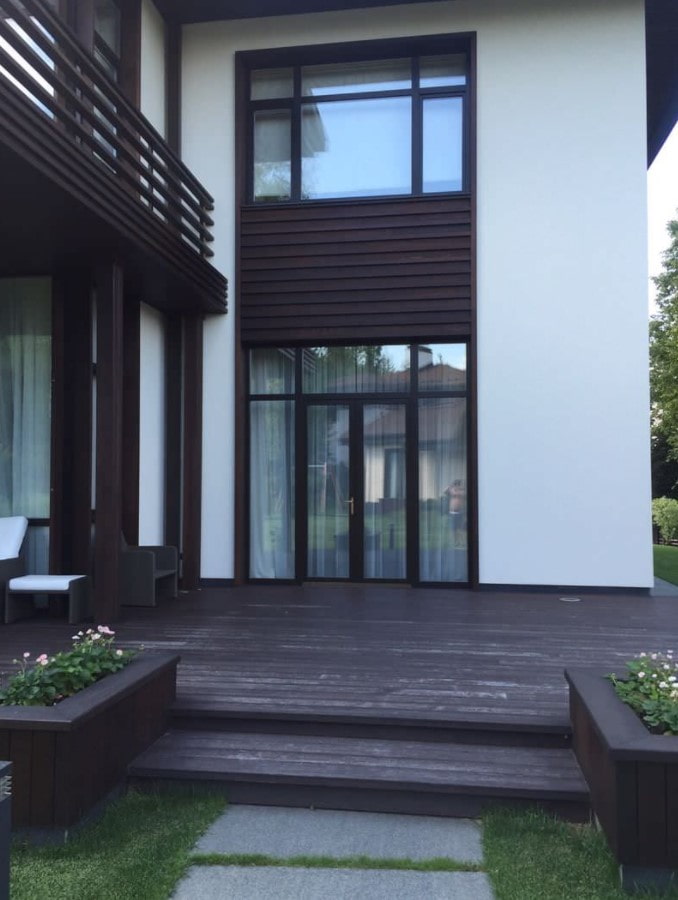
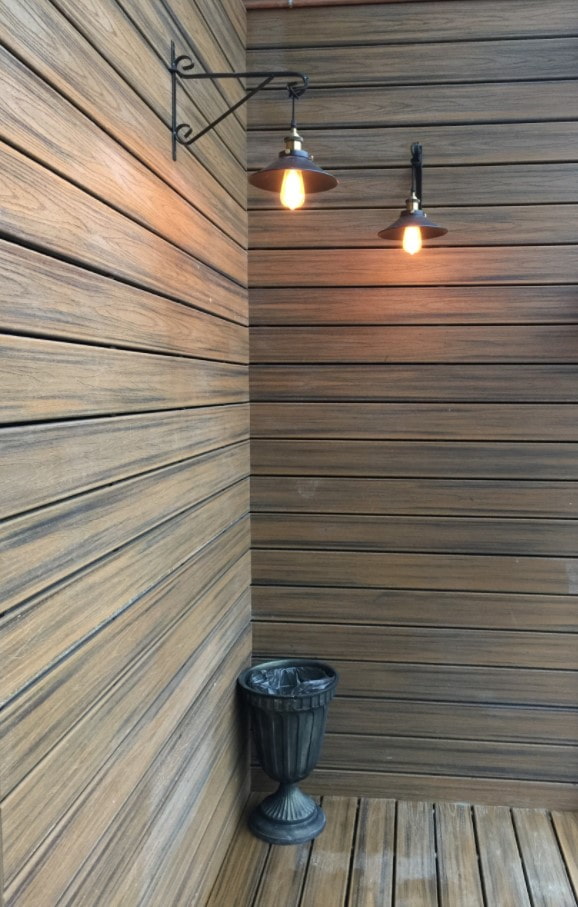
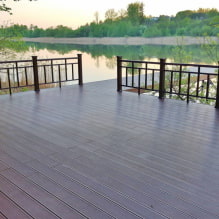
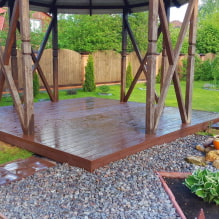
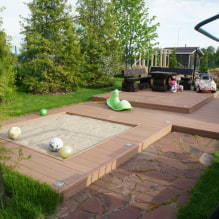
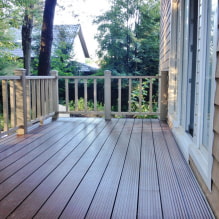
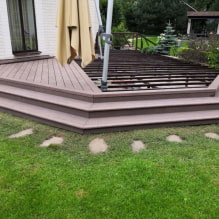
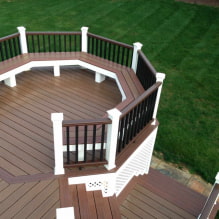

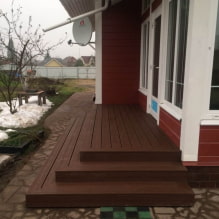
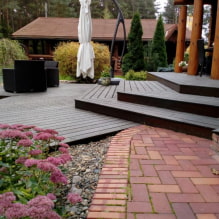
 What is better not to do it yourself during the repair?
What is better not to do it yourself during the repair? Bloated linoleum: how to fix it without disassembly
Bloated linoleum: how to fix it without disassembly The worst decisions in apartment renovation
The worst decisions in apartment renovation  Installation of ceiling tiles: choice of materials, preparation, order of work
Installation of ceiling tiles: choice of materials, preparation, order of work How to glue a ceiling plinth to a stretch ceiling?
How to glue a ceiling plinth to a stretch ceiling? Ceiling plinth for stretch ceiling: types, recommendations for selection
Ceiling plinth for stretch ceiling: types, recommendations for selection